8W2 Global Studies
Section outline
-
EXPLORE / TŪHURA learning intentions
- We are EXPLORING...
- to understand how exploration and innovation create opportunities and challenges for people, places, and environments
- We are EXPLORING...
- our prior knowledge in Maths, Science, PE and Health and English to understand that events have causes and effects and use this knowledge as a foundation for our Global studies context on Keeping ourselves safe.
Success criteria: How humans are born to explore the Earth and the sky to discover ways to constantly evolve and grow. Students are creating a knowledge bank into their long term memory using cross curricular pollination. They should then be able to hook and build on this as they focus on solving a problem within a context in global studies, Keeping ourselves safe.
- to link graph's x. y axis to the earth's equator and the prime meridian
- to link coordinates on a graph to the GPS grid onplanet Earth
- using Latitude and longitudes to find location on a map
- using longitude to calculate time difference
- using the tropic of Cancer, Capricorn and the equator to understand the seasons
- using angles to calculate Longitudes and latitudes
- locating true North and magnetic North to find directions
- locating the North star, Polaris and its use to find true North in the northern hemisphere
- Locating the Southern Cross and Archenar to locate true South in the souther hemisphere in Auckland's nigh sky
- locating Orion constellation in Auckland's night sky
- locating the constellation Matariki in Auckland's night sky
- sunlight - Infra red, royGbiv UV, vit D, melatonin,photosynthesis, foodchain, food CHNOFe.
- Life on Earth - Periodic table from 1 to 10 and 26 Iron,MrsCgren. Air, Co2, Ozone, Methane, Nitrogen, oxygen.
- Moon - 28 days cycle, month, tides, menstrual cycle.
Task: Introduction - A student introduces, when another student hears a common factor with the speaker the student will take the speaker's place till every has a turn.
World map: A3 world map to each student. Locate the continents, oceans, countries, directions, equator, Prime meridian, tropic of Capricorn, Tropic of Cancer, NZ co ordinates.
- We are EXPLORING...
-
EXPLORE / TŪHURA learning intentions
- We are EXPLORING...
- to understand how exploration and innovation create opportunities and challenges for people, places, and environments
- We are EXPLORING...
- our prior knowledge in Maths, Science, PE and Health and English to understand that events have causes and effects and use this knowledge as a foundation for our Global studies context on Keeping ourselves safe.
Success criteria: How humans are born to explore the Earth and the sky to discover ways to constantly evolve and grow. Students are creating a knowledge bank into their long term memory using cross curricular pollination. They should then be able to hook and build on this as they focus on solving a problem within a context in global studies, Keeping ourselves safe.
- to link graph's x. y axis to the earth's equator and the prime meridian
- to link coordinates on a graph to the GPS grid onplanet Earth
- using Latitude and longitudes to find location on a map
- using longitude to calculate time difference
- using the tropic of Cancer, Capricorn and the equator to understand the seasons
- using angles to calculate Longitudes and latitudes
- locating true North and magnetic North to find directions
- locating the North star, Polaris and its use to find true North in the northern hemisphere
- Locating the Southern Cross and Archenar to locate true South in the souther hemisphere in Auckland's nigh sky
- locating Orion constellation in Auckland's night sky
- locating the constellation Matariki in Auckland's night sky
- sunlight - Infra red, royGbiv UV, vit D, melatonin,photosynthesis, foodchain, food CHNOFe.
- Life on Earth - Periodic table from 1 to 10 and 26 Iron,MrsCgren. Air, Co2, Ozone, Methane, Nitrogen, oxygen.
- Moon - 28 days cycle, month, tides, menstrual cycle.
Task: Introduction - A student introduces, when another student hears a common factor with the speaker the student will take the speaker's place till every has a turn.
World map: A3 world map to each student. Locate the continents, oceans, countries, directions, equator, Prime meridian, tropic of Capricorn, Tropic of Cancer, NZ co ordinates.
Add: 50 countires and location on the map.
- We are EXPLORING...
-
EXPLORE / TŪHURA learning intentions:
- We are EXPLORING...
- to understand how exploration and innovation create opportunities and challenges for people, places, and environments
- We are EXPLORING...
- our prior knowledge in Maths, Science, PE and Health and English to understand that events have causes and effects and use this knowledge as a foundation for our Global studies context on Keeping ourselves safe.
Success criteria: How humans are born to explore the Earth and the sky to discover ways to constantly evolve and grow. Students are creating a knowledge bank into their long term memory using cross curricular pollination. They should then be able to hook and build on this as they focus on solving a problem within a context in global studies, Keeping ourselves safe.
- to link graph's x. y axis to the earth's equator and the prime meridian
- to link coordinates on a graph to the GPS grid onplanet Earth
- using Latitude and longitudes to find location on a map
- using longitude to calculate time difference
- using the tropic of Cancer, Capricorn and the equator to understand the seasons
- using angles to calculate Longitudes and latitudes
- locating true North and magnetic North to find directions
- locating the North star, Polaris and its use to find true North in the northern hemisphere
- Locating the Southern Cross and Archenar to locate true South in the souther hemisphere in Auckland's nigh sky
- locating Orion constellation in Auckland's night sky
- locating the constellation Matariki in Auckland's night sky
- sunlight - Infra red, royGbiv UV, vit D, melatonin,photosynthesis, foodchain, food CHNOFe.
- Life on Earth - Periodic table from 1 to 10 and 26 Iron,MrsCgren. Air, Co2, Ozone, Methane, Nitrogen, oxygen.
- Moon - 28 days cycle, month, tides, menstrual cycle.
Task: Introduction - A student introduces, when another student hears a common factor with the speaker the student will take the speaker's place till every has a turn.
World map: A3 world map to each student. Locate the continents, oceans, countries, directions, equator, Prime meridian, tropic of Capricorn, Tropic of Cancer, NZ co ordinates.
- We are EXPLORING...
-
EXPLORE / TŪHURA learning intentions:
- We are EXPLORING...
- to understand how exploration and innovation create opportunities and challenges for people, places, and environments
- We are EXPLORING...
- our prior knowledge in Maths, Science, PE and Health and English to understand that events have causes and effects and use this knowledge as a foundation for our Global studies context on Keeping ourselves safe.
Success criteria: How humans are born to explore the Earth and the sky to discover ways to constantly evolve and grow. Students are creating a knowledge bank into their long term memory using cross curricular pollination. They should then be able to hook and build on this as they focus on solving a problem within a context in global studies, Keeping ourselves safe.
- to link graph's x. y axis to the earth's equator and the prime meridian
- to link coordinates on a graph to the GPS grid onplanet Earth
- using Latitude and longitudes to find location on a map
- using longitude to calculate time difference
- using the tropic of Cancer, Capricorn and the equator to understand the seasons
- using angles to calculate Longitudes and latitudes
- locating true North and magnetic North to find directions
- locating the North star, Polaris and its use to find true North in the northern hemisphere
- Locating the Southern Cross and Archenar to locate true South in the souther hemisphere in Auckland's nigh sky
- locating Orion constellation in Auckland's night sky
- locating the constellation Matariki in Auckland's night sky
- sunlight - Infra red, royGbiv UV, vit D, melatonin,photosynthesis, foodchain, food CHNOFe.
- Life on Earth - Periodic table from 1 to 10 and 26 Iron,MrsCgren. Air, Co2, Ozone, Methane, Nitrogen, oxygen.
- Moon - 28 days cycle, month, tides, menstrual cycle.
Task: Introduction - A student introduces, when another student hears a common factor with the speaker the student will take the speaker's place till every has a turn.
World map: A3 world map to each student. Locate the continents, oceans, countries, directions, equator, Prime meridian, tropic of Capricorn, Tropic of Cancer, NZ co ordinates.
- We are EXPLORING...
-
EXPLORE / TŪHURA learning intentions:
EXPLORE / TŪHURA learning intentions:
- We are EXPLORING...
- to understand how exploration and innovation create opportunities and challenges for people, places, and environments
- We are EXPLORING...
- our prior knowledge in Maths, Science, PE and Health and English to understand that events have causes and effects and use this knowledge as a foundation for our Global studies context on Keeping ourselves safe.
Success criteria: How humans are born to explore the Earth and the sky to discover ways to constantly evolve and grow. Students are creating a knowledge bank into their long term memory using cross curricular pollination. They should then be able to hook and build on this as they focus on solving a problem within a context in global studies, Keeping ourselves safe.
- to link graph's x. y axis to the earth's equator and the prime meridian
- to link coordinates on a graph to the GPS grid onplanet Earth
- using Latitude and longitudes to find location on a map
- using longitude to calculate time difference
- using the tropic of Cancer, Capricorn and the equator to understand the seasons
- using angles to calculate Longitudes and latitudes
- locating true North and magnetic North to find directions
- locating the North star, Polaris and its use to find true North in the northern hemisphere
- Locating the Southern Cross and Archenar to locate true South in the souther hemisphere in Auckland's nigh sky
- locating Orion constellation in Auckland's night sky
- locating the constellation Matariki in Auckland's night sky
- sunlight - Infra red, royGbiv UV, vit D, melatonin,photosynthesis, foodchain, food CHNOFe.
- Life on Earth - Periodic table from 1 to 10 and 26 Iron,MrsCgren. Air, Co2, Ozone, Methane, Nitrogen, oxygen.
- Moon - 28 days cycle, month, tides, menstrual cycle.
Task: Introduction - A student introduces, when another student hears a common factor with the speaker the student will take the speaker's place till every has a turn.
World map: A3 world map to each student. Locate the continents, oceans, countries, directions, equator, Prime meridian, tropic of Capricorn, Tropic of Cancer, NZ co ordinates.
- We are EXPLORING...
-
Enter text here...
FOCUS / ARONGA learning intentions:
- We are FOCUSING...on identifying factors in our environment in New Zealand to keep ourselves safe.
- We are FOCUSING... on discussing, comparing and developing ideas to find solutions to a problem in New Zealand that is of concern to our safety and well being
- We are FOCUSING... on adapting and fine tuning the laws and rules already in place for health and safety in New Zealand to make it lore effective.
Ako: Learning and Thinking Strategy
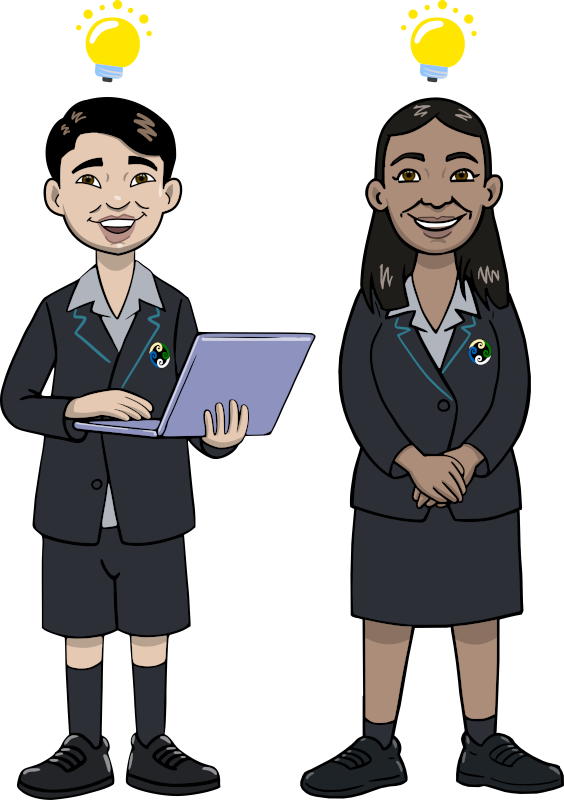
Enter text here...
-
Enter text here...
FOCUS / ARONGA learning intentions:
- We are FOCUSING...on identifying factors in our environment in New Zealand to keep ourselves safe.
- We are FOCUSING... on discussing, comparing and developing ideas to find solutions to a problem in New Zealand that is of concern to our safety and well being
- We are FOCUSING... on adapting and fine tuning the laws and rules already in place for health and safety in New Zealand to make it lore effective.
Ako: Learning and Thinking Strategy

Enter text here...
-
Enter text here...
FOCUS / ARONGA learning intentions:
- We are FOCUSING...on identifying factors in our environment in New Zealand to keep ourselves safe.
- We are FOCUSING... on discussing, comparing and developing ideas to find solutions to a problem in New Zealand that is of concern to our safety and well being
- We are FOCUSING... on adapting and fine tuning the laws and rules already in place for health and safety in New Zealand to make it lore effective.
Ako: Learning and Thinking Strategy

Enter text here...
-
Enter text here...
FOCUS / ARONGA learning intentions:
- We are FOCUSING...on identifying factors in our environment in New Zealand to keep ourselves safe.
- We are FOCUSING... on discussing, comparing and developing ideas to find solutions to a problem in New Zealand that is of concern to our safety and well being
- We are FOCUSING... on adapting and fine tuning the laws and rules already in place for health and safety in New Zealand to make it lore effective.
Ako: Learning and Thinking Strategy

Enter text here...
-
Kia Ora,
Welcome back to Term 2.
Learning Intentions:
The course of Aotearoa New Zealand’s histories has been shaped by the use of power.
Relationships and connections between people and across boundaries have shaped the course of Aotearoa New Zealand’s histories.
People hold different perspectives on the world depending on their values, traditions, and experiences.
Success Criteria:
I can understanding how is Anzac Day is a significant event in Aotearoa history
I understand NZ's participation in WW1 and the sacrifice our soldiers made for Aotearoa.I am also learning about their experiences through their biographies
I can identify the attitudes and values that motivated people in the past and compare them with attitudes and values of today
I can show empathy towards the ANZAC’S by learning about their experiences through their biographies
Activities:
DO NOW: Anzac Quiz (https://online.mhjc.school.nz/mod/page/view.php?id=92220)
- What is Anzac Day? (Discussion and video) - Class activity
- Fun Fact Anzac cards and worksheet (Group activity)
- Listen to the podcast
- Showing gratitude - messages and making poppies
-
Learning Intentions:
The course of Aotearoa New Zealand’s histories has been shaped by the use of power.
Relationships and connections between people and across boundaries have shaped the course of Aotearoa New Zealand’s histories.
People hold different perspectives on the world depending on their values, traditions, and experiences.
Success Criteria:
I can understanding how is Anzac Day is a significant event in Aotearoa history
I understand NZ's participation in WW1 and the sacrifice our soldiers made for Aotearoa.I am also learning about their experiences through their biographies
I can identify the attitudes and values that motivated people in the past and compare them with attitudes and values of today
I can show empathy towards the ANZAC’S by learning about their experiences through their biographies
Activities:
DO NOW: Recap of the previous lesson and read the link 1( soldiers experience)
1. http://www.eyewitnesstohistory.com/gallipoli.htm
- Read the link below. After you read the link, complete the table. Proofread your work and then type your answers on a google doc. This google doc can be used for your holistic report.
2.https://nzhistory.govt.nz/war/the-gallipoli-campaign/conditions
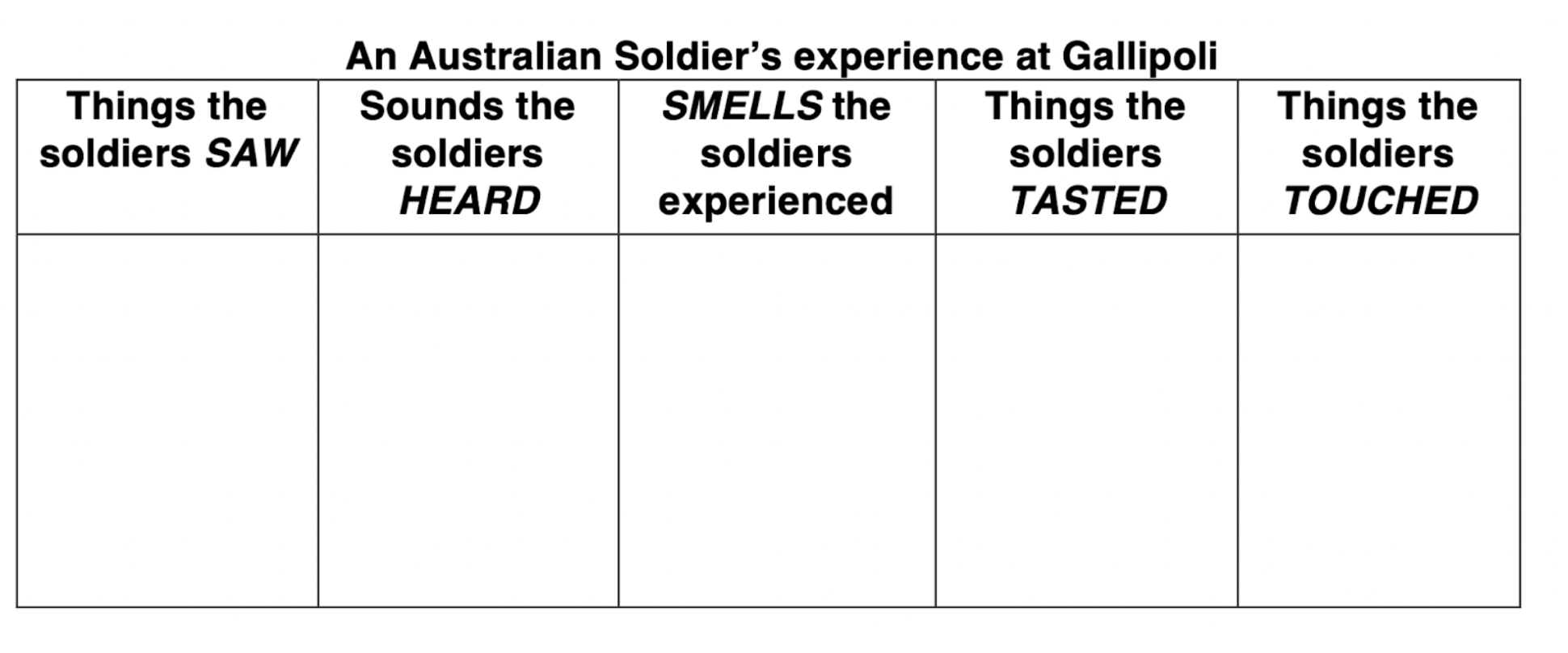
One of the things we try to do in history is to develop empathy for the people we study — that is, to try to put ourselves in other peopleʼs position and understand what it was like for them.
Of course, that is very hard to do — especially for something like a war, when most of us do not really know what it is like to be in that situation. Nor can we fully comprehend how the soldiers of 1915 were thinking about their role and responsibilities.
But this is why we use evidence from the time — to listen to what people who were there said, how they behaved, what they felt and saw.
Your task is to understand what it must have been like to be a soldier serving at Gallipoli.
- Documentary (https://www.nzonscreen.com/title/gallipoli-the-new-zealand-story-1984?collection=anzac-day)
-
Learning Intentions:
Relationships and connections between people and across boundaries have shaped the course of Aotearoa New Zealand’s histories.
Success Criteria:
I understand NZ's participation in WW1 and the sacrifice our soldiers made for Aotearoa.I am also learning about their experiences through their biographies
I can show empathy towards the ANZAC’S by learning about their experiences through their biographies
Activities:
DO NOW: Holistic report evidence - Use the solider's experience for Awhinatanga
Note-taking skills - Using the outline method, read one of the biographies and take notes in your books. This activity is preparing you for your upcoming assessment.
Link for the biography is on your google classroom page.
-
EXPLORE / TŪHURA learning intentions:
- We are EXPLORING to research various historical NZ and Global natural disasters
- We are EXPLORING to discover changes in weather patterns that impact Global warming
Success Criteria:
- We understand that events have causes and the impact diasters have on people, place and environment
- We understand how formal and informal groups make decisions that impact on communities.
Activities:
DO NOW: Diaster dictation
Detailed instructions will be provided in class with reagrd to the activities below.
- Pictionary
- Fact finding task
- Message board
- Scenario - Understanding MHJC Emergency plans (class discussion)
-
EXPLORE / TŪHURA learning intentions:
- We are EXPLORING to research various historical NZ and Global natural disasters
- We are EXPLORING to discover changes in weather patterns that impact Global warming
Success Criteria:
- We understand that events have causes and the impact diasters have on people, place and environment
- We understand how formal and informal groups make decisions that impact on communities.
Activities:
DO NOW: Recap: Introduction to the context
Detailed instructions will be provided in class with regard to the activities below.
Newspaper Article TaskFind an article from the link about a Natural disaster and write a summary in a paragraph about the article
https://www.theguardian.com/world/natural-disasters
Instructions:
Read the article as a group
Each person has a role
The group discusses the findings and the outcome
Then the group splits up and writes a summary individually
-
EXPLORE / TŪHURA learning intentions:
- We are EXPLORING to research various historical NZ and Global natural disasters
- We are EXPLORING to discover changes in weather patterns that impact Global warming
Success Criteria:
- We understand that events have causes and the impact diasters have on people, place and environment
- We understand how formal and informal groups make decisions that impact on communities.
Activities:
DO NOW: Quiz
Survival Role Play
You will be given one of the roles below (A,B,C,D). Imagine that you have survived a natural disaster and are waiting for rescue. Only three of you can be rescued. You need to justify why you should be one of the rescued people.
Share you answers with the class
All roles will be shared in class.
-
Opened: Monday, 27 May 2024, 12:00 AMDue: Wednesday, 5 June 2024, 7:00 PM
-
EXPLORE / TŪHURA learning intentions:
- We are EXPLORING to research various historical NZ and Global natural disasters
- We are EXPLORING to discover changes in weather patterns that impact Global warming
Success Criteria:
- We understand that events have causes and the impact diasters have on people, place and environment
- We understand how formal and informal groups make decisions that impact on communities.
Activities:
1. DO NOW: Group challenge: Let's see who survives.... (Further instructions will be presented on a google slide)
2. Test our Numeracy skills through our context learning: Access this activity through Google classroom: Further instructions will be provide to you in class.
Numeracy link - Tuanui Survives (You will be reading a story about how Tuanui survives.You will be provided with improper fractions to know the outcome). The task will be explained in detail during classtime.
3. Watching a documentary: Wild weather under threat
Activity: Individually answer the questions below.
Write down the key points from the video
What was the impact on these disasters on people, place and the environment?
Write ⅔ paragraphs.
-
Pono: Hauora
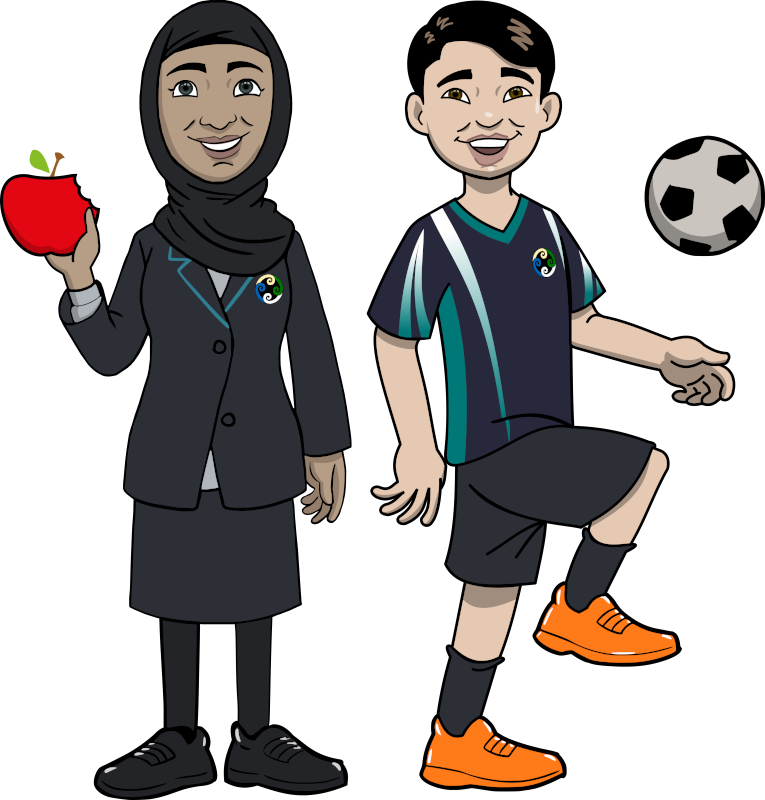
Awhinatanga: Positive Partnerships

Wänanga: Active Learner
EXPLORE / TŪHURA learning intentions:
- We are EXPLORING to research various historical NZ and Global natural disasters
- We are EXPLORING to discover changes in weather patterns that impact Global warming
Success Criteria:
- We understand that events have causes and the impact diasters have on people, place and environment
- We understand how formal and informal groups make decisions that impact on communities.
Activities:
1. DO NOW: Test our Numeracy skills through our context learning: Access this activity through Google classroom: Further instructions will be provide to you in class.
Numeracy link - Tuanui Survives (You will be reading a story about how Tuanui survives.You will be provided with improper fractions to know the outcome). The task will be explained in detail during classtime.
2. Continue watching a documentary: Wild weather under threat
Activity: Individually answer the questions below.
Write down the key points from the video
What was the impact on these disasters on people, place and the environment?
Write ⅔ paragraphs.
3. Working on your script for your role play. Please be ready for your roleplay in Week 10
4. Literacy task: Auckland Floods (Refer to the google doc)
-
FOCUS / ARONGA learning intentions:
- We are FOCUSING on understanding the impact of natural disasters on people, place and environment.
- We are FOCUSING on understanding our personal and collective responsibility in response to NZ Civil defence requirements
Success Criteria:
- We understand that events have causes and the impact diasters have on people, place and environment
- We understand how formal and informal groups make decisions that impact on communities.
1.Numeracy link - Tuanui Survives (You will be reading a story about how Tuanui survives.You will be provided with improper fractions to know the outcome). The task will be explained in detail during classtime
2.Literacy task: Auckland Floods (Refer to the google doc)
3. Events through history - including survival stories.(Highlighting the impact of the event on people, place and environment.
3.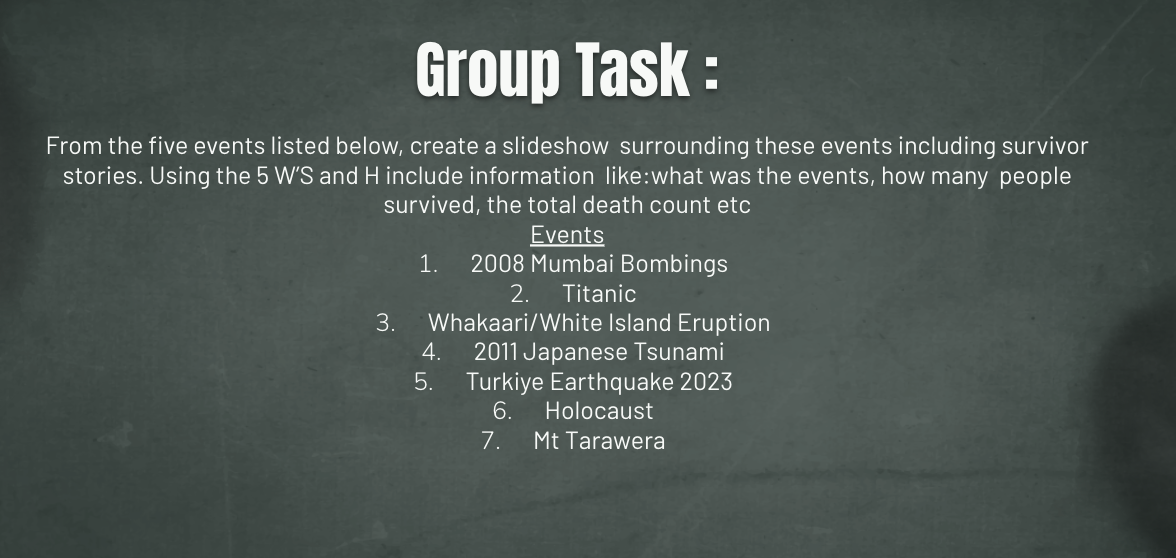
-
FOCUS / ARONGA learning intentions:- We are FOCUSING on understanding the impact of natural disasters on people, place and environment.
- We are FOCUSING on understanding our personal and collective responsibility in response to NZ Civil defence requirements
Success Criteria:
- We understand that events have causes and the impact diasters have on people, place and environment
- We understand how formal and informal groups make decisions that impact on communities.
DO NOW: Quiz
1. Role play
2. Feedback on your slideshow
3. Emergency plans -
This week we will aim to wrap up the context from last term on "Survival"
FOCUS / ARONGA learning intentions:- We are FOCUSING on understanding our personal and collective responsibility in response to NZ Civil defence requirements
Success Criteria:
- We understand that events have causes and the impact diasters have on people, place and environment
- We understand how formal and informal groups make decisions that impact on communities.
Activities:
DO NOW: Quiz
1. Slideshow
3. Emergency plans- Group Opinion piece: Did Joe Biden make the right decision to step down for the US election race?
-
EXPLORE / TŪHURA learning intentions:
- We are EXPLORING the opening ceremony and types of sports of the Paris Olympics
- We are EXPLORING the ancient and modern Olympics and the significance of the mascots
Success Criteria:
- We understand the the origins and traditions of the Olympics and how the event has changed over time.
- We understand the the significance of the mascots and the significance of the opening ceremony
ACTIVITIES:
DO NOW: Link to holistic report evidence
Viewing the List of sports in both English and Maori.In pairs learning at least 2 to 3 names in Maori.
Opening ceremony task: What aspects of our culture, values and national identity does the countries highlight? (Literacy task)
Click on the link and read the ff page: Learning about the mascot of the Olympic games (Literacy task)- https://olympics.com/en/olympic-games/paris-2024/mascot
-
EXPLORE / TŪHURA learning intentions:
- We are EXPLORING the opening ceremony and types of sports of the Paris Olympics
- We are EXPLORING the ancient and modern Olympics and the significance of the mascots
Success Criteria:
- We understand the the origins and traditions of the Olympics and how the event has changed over time.
- We understand the the significance of the mascots and the significance of the opening ceremony
ACTIVITIES:
DO NOW: Learning at least 2 names of sports in Maori
Pair share task: If there was an opportunity to add in another sport to the current list, what sport would you add and why? (Literacy task). You and your group are to invent a new youth-friendly sport that athletes could participate in at the Paris 2024 Olympic Games.Students. You could make an instructional video or Powtoon about how to play the sport or complete a rules and information worksheet.(Literacy task).
Documentary:Ancient Olympics (Listening and note taking)
Interactive Activity Online: Pair share/Individual option: https://www.bbc.co.uk/bitesize/articles/z36j7ty#z42gr2p (Literacy task)
-
EXPLORE / TŪHURA learning intentions:
- We are EXPLORING the Olympics by investigating and researching the history of the games, the medals, and mascots as well as customs and traditions of the host country.
- We are EXPLORING the Olympics by understanding the Olympic values and how they apply to everyday life.
Success Criteria:
- We understand the the origins and traditions of the Olympics and how the event has changed over time.
- We understand the the significance of the values and can apply this to our daily life
- We understand the the significance of the values and can compare this to the MHJC values.
Activities:
- Research task doc (Research doc with questions)
- Olympic values (https://www.youtube.com/watch?v=nQmYNNUzuOA)
- 2 x Literacy tasks below
What does the word Excellence mean to you?
What does the word friendship mean to you?
What do you think respect means?
Why are these Olympics values important?
- Creating word clouds to highlight each value and answer the question below: (Literacy)
Using the Word cloud website, use the values ABOVE to create these clouds: https://www.wordclouds.com/
Here are some examples: https://docs.google.com/document/d/1RW3goEYOPSGen0gabrAL1GkD-mAQwiV0eM34U3pFQUQ/edit
-
EXPLORE / TŪHURA learning intentions:
- We are EXPLORING customs and traditions of the host country
- We are EXPLORING the countries being represented at the Olympic games. and their locations on the world map
Success Criteria:
- We understand the customs and traditions of the host country
- We are identifying Olympic teams on the world map
Activities:
DO NOW: Interactive Activity Online: Pair share/Individual option: https://www.bbc.co.uk/bitesize/articles/z36j7ty#z42gr2p (Literacy task
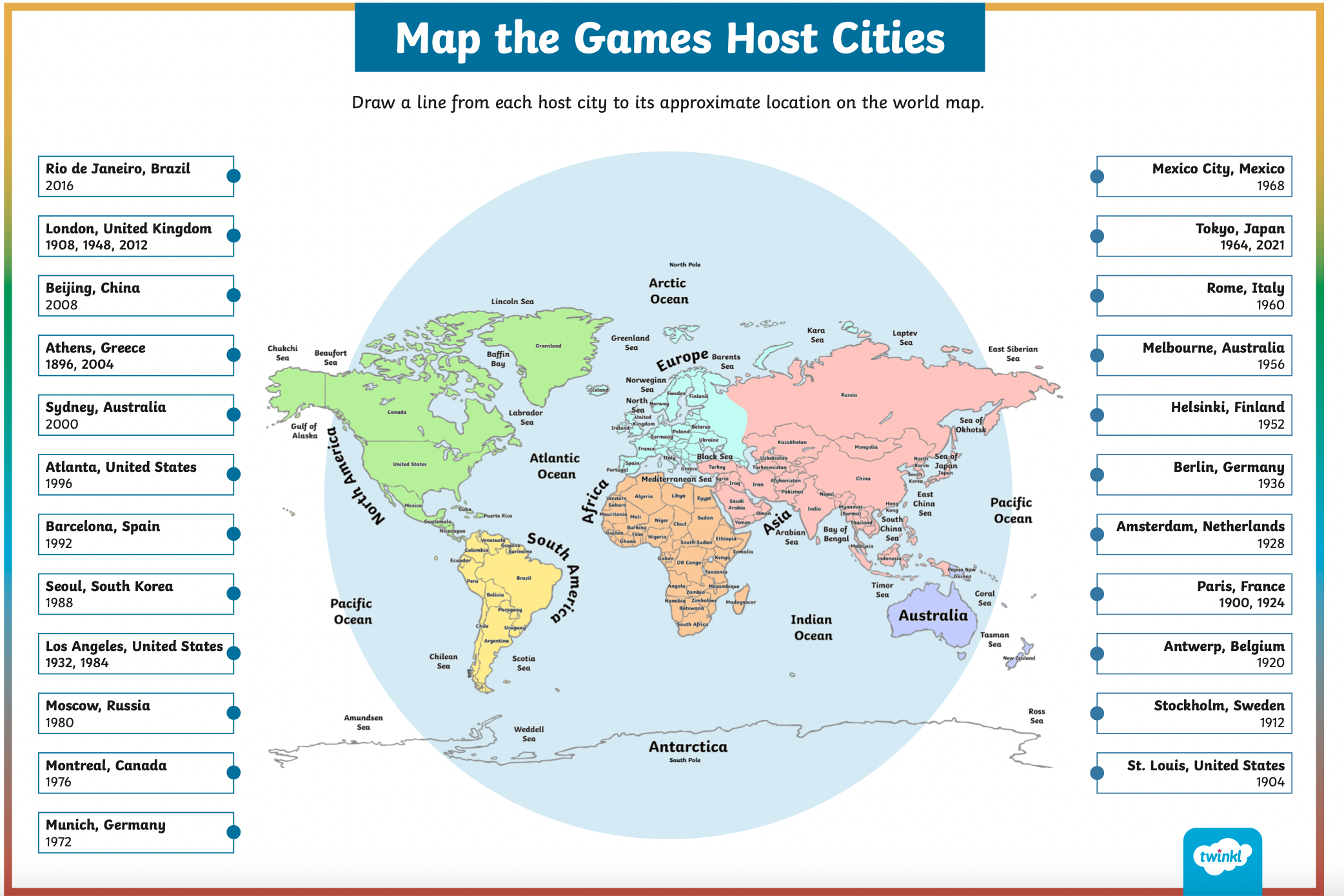
-
FOCUS / ARONGA learning intentions:
- We are FOCUSING on developing our understanding of the Olympic games by describing the outcome of Abandoned Olympic stadiums before and after the games
- We are FOCUSING on identifying and discussing the criteria used to select a host city and the challenges faced by the host city before the opening of the games.
Success Criteria:
- We understand the challenges faced by the host city prior to the games
Activities:
- Reading the article from Investopedia and discussing in your groups (Literacy task)
- Answer questions presented in class (Literacy task)
-
FOCUS / ARONGA learning intentions:
- We are FOCUSING on developing our understanding of the Olympic games by writing a persuasive letter to the IOC
Success Criteria:
- We have added a new sport from our group planning and are now persuading the IOC to add the youth friendly sport
Activities:
DO NOW: Revise your countries being represented in the Olympics in Maori - Refer to the flashcards on google classroom
DO NOW: Learn 2/3 more name of a sport in Maori
Writing a persuasive letter/speech
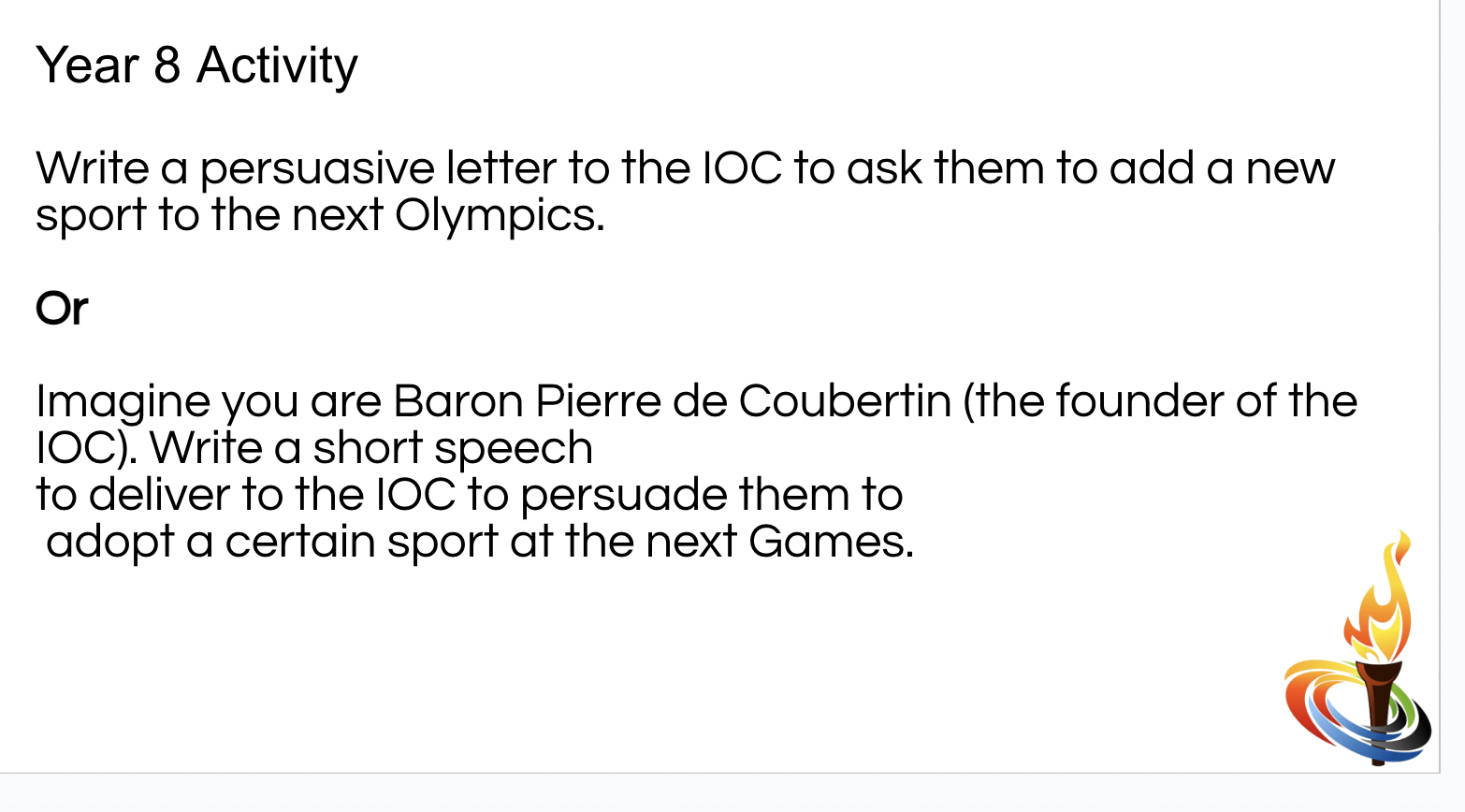
-
FOCUS / ARONGA learning intentions:
- We are FOCUSING on developing our understanding of the Olympic games by writing a persuasive letter to the IOC
Success Criteria:
- We have added a new sport from our group planning and are now persuading the IOC to add the youth friendly sport
Activities:
DO NOW: Answers to the article - practice test
DO NOW: Revise your countries being represented in the Olympics in Maori - Refer to the flashcards on google classroom
DO NOW: Learn 2/3 more name of a sport in Maori
Writing a persuasive letter/speech
-
FOCUS / ARONGA learning intentions:
- We are FOCUSING on developing our skill on resource interpretation
Success Criteria:
- We are developing an understanding on resource interpretation by reading an article and answering questions
Activities:
DO NOW: Work on your powtoon
- Global Studies Assessment 2
Specific Assessment Information:
When: Week 9 - Monday and Tuesday (16th and 17th September 2024)
Duration: 1 hr per session
Assessment Name Resource Interpretation: Economic Impact on hosting the Olympics
- Finalise your Powtoon presentation-
Opened: Thursday, 5 September 2024, 12:00 AMDue: Friday, 18 October 2024, 3:00 PM
Assessing students understanding of resource interpretation
-
FOCUS / ARONGA learning intentions:
- We are FOCUSING on discussing politics in the Olympics by investigating various significant political events at the past Olympic games.
- We are FOCUSING on developing our understanding of the Olympics games by considering the economic and social impacts on host cities
Success Criteria
- We are looking at various significant political events at the past Olympic games.
- We are the challenges faced by the host country when the stadiums are abandoned post Olympics
Activities:
- Research task: Political event
- Documentary: 1936 Olympics: https://www.youtube.com/watch?v=gn-Xg158TcQ
-
THIS WEEK TO WILL CONTINUE WITH OUR POLITICAL EVENTS SILDESHOW. YOU SHOULD AIM TO COMPLETE THIS BY WEEK 2.
FOCUS / ARONGA learning intentions:
- We are FOCUSING on discussing politics in the Olympics by investigating various significant political events at the past Olympic games.
- We are FOCUSING on developing our understanding of the Olympics games by considering the economic and social impacts on host cities
Success Criteria
- We are looking at various significant political events at the past Olympic games.
- We are the challenges faced by the host country when the stadiums are abandoned post Olympics
Activities:
- Research task: Political event
- Powtoon presentation presentation
-
EXPLORE / TŪHURA learning intentions:
- We are exploring Aotearoa summer events by investigating the different types of summer markets in Aotearoa so that we can identify a market that suits our interest.
- We are exploring various products by researching current trends and best sellers so that we can decide on our final product
Success Criteria:
- We are identifying trending markets
- We are analysing the best sellers from prior MHJC market day
Activities:
- Consumer and producers task
- Types of markets
- Discussing our market day plan
-
EXPLORE / TŪHURA learning intentions:
- We are exploring Aotearoa summer events by investigating the different types of summer markets in Aotearoa so that we can identify a market that suits our interest.
- We are exploring various products by researching current trends and best sellers so that we can decide on our final product
Success Criteria:
- We are identifying trending markets
- We are analysing the best sellers from prior MHJC market day
Activities:
- Market research data to analyse (Numeracy and Literacy)
- Business Name and Logo
- List of Equipment requirement
- Completing the draft Business plan copy (Literacy)
-
EXPLORE / TŪHURA learning intentions:
- We are exploring Aotearoa summer events by investigating the different types of summer markets in Aotearoa so that we can identify a market that suits our interest
Success Criteria:
- We have finalised our products after analysis our market research data
- We are learning to draft a health and safety plan
Activities:
- Market research data to analyse - final analysis (Numeracy and Literacy) - transfer info to the market day plan doc
- Completing the draft Business plan copy (Literacy)
- Health and Safety plan draft (Literacy)
-
EXPLORE / TŪHURA learning intentions:
- We are exploring Aotearoa summer events by investigating the different types of summer markets in Aotearoa so that we can identify a market that suits our interest
Success Criteria:
- We have finalised our products after analysis our market research data
- We are learning to draft a health and safety plan
Activities:
- Making final non food product in class - Bring in receipts from purchases
- Completing the draft Business plan copy (Literacy)
- Health and Safety plan Final copy to check with Mrs Selagan (Literacy)
-
FOCUS / ARONGA learning intentions:
- We are FOCUSING on Aotearoa summer events by looking at the business operations (marketing mix) on how to run a successful summer market as a side hustle.
- We are FOCUSING developing our understanding on rights and responsibilities as a consumer and producer by discussing the Consumer Guarantees and Fair Trade Act
- We are FOCUSING on identifying the best advertisement so that we can create an advert to enhance our stall
Success Criteria
- We are learning about our rights as a consumer
- We will be making the best advertisements to promote our items for market day
Activities:
- Marketing mix - focus on promotion (making your advert through a poster)
- Complete task from activity sheet on adverts
-
FOCUS / ARONGA learning intentions:
- We are FOCUSING on Aotearoa summer events by looking at the business operations (marketing mix) on how to run a successful summer market as a side hustle.
- We are FOCUSING developing our understanding on rights and responsibilities as a consumer and producer by discussing the Consumer Guarantees and Fair Trade Act
- We are FOCUSING on identifying the best advertisement so that we can create an advert to enhance our stall
Success Criteria:
- We understand our rights as consumer and will aim to apply this to our customers during market day.
- We will be promoting our items for market day by making adverts and signage that are creative and eye catching
Activities:
- Complete google doc
- Check final adverts and signage to Mrs Selagan
-
PLAN & DO / WHAKAMAHI learning intentions:
- We are PLANNING a Wai Whanau market day so that we can showcase our skills and learning throughout the term
Success Criteria:
- We are using the checklist to see if we are ready for our market day.
Activities:
- Arrive at school by 8.15am so that we can store your items in the fridge if required
- Set up Market Day stall by Lunch time: 13.30pm
- Grab a table from the under the staircase between water and mountains
- Sales begin at 1.50pm during Session 5 and stop at 2.40pm
- Make sure that you clean up your area. Fold the table and store back under the staircase.
- Note: We will count your profits during Global Studies on Monday in Week 9. All money will be stored with Mrs Naidoo.
-
PLAN & DO / WHAKAMAHI learning intentions:
- We are PLANNING a Wai Whanau market day so that we can showcase our skills and learning throughout the term
Activities:
- Reflection for market day and the context
- Reflection on Maturanga Maori and Global Studies content
